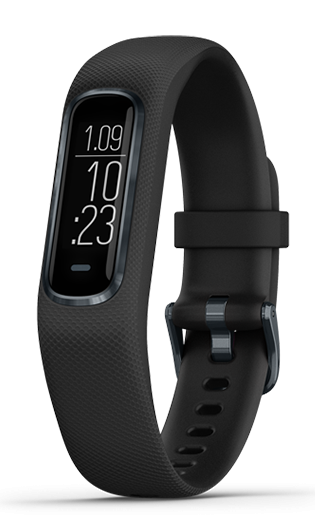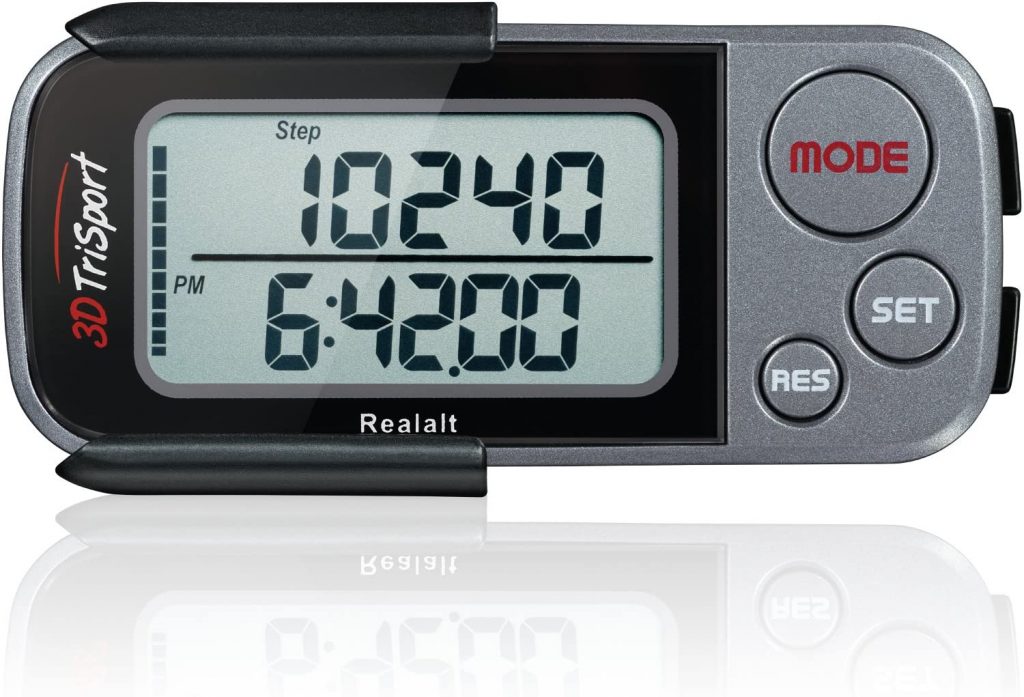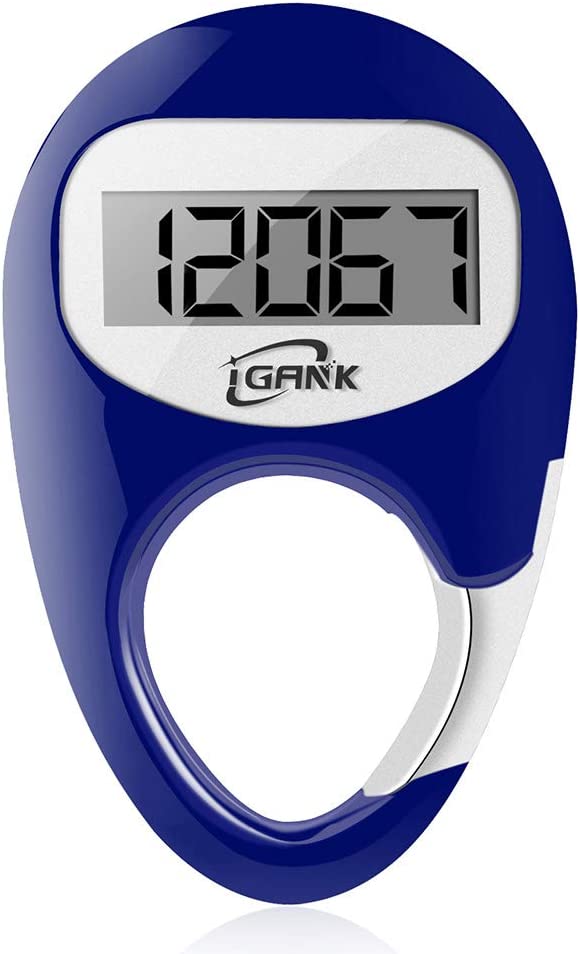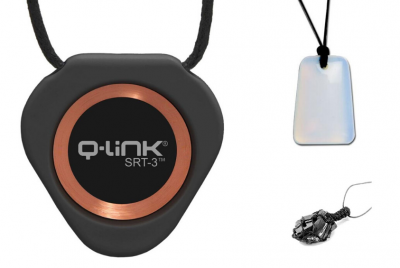When worn correctly, both Bluetooth and wired earbuds offer a lightweight and comfortable way to listen…
Fitness Trackers Without Bluetooth – Best of 2022
*We may earn a commission for purchases made using our links. Please see our disclosure to learn more.
According to one 2017 study, 75% of Americans feel that being in shape is important to them. With such a sizable chunk of the population interested in increasing their activity level, it’s no wonder that fitness trackers are everywhere. Many smartwatch manufacturers have added fitness tracker capabilities to their watches, and many fitness tracker manufacturers have added smartwatch-like features.
Regardless of whether you’re wearing a smartwatch or a dedicated fitness tracker, these devices can be quite motivating. Different watches allow you to track your activities, count your steps, and even monitor your sleep. Many people find that seeing their step count displayed serves as a good reminder to be more active, helping them to achieve a less sedentary lifestyle. Quite a few of the trackers on the market today also have a companion app, which gathers information from the tracker and displays it in an easy-to-digest format. Some offer insight into your sleep quality, VO2 Max, and overall fitness level.
Fitness trackers are often worn either as a watch around the wrist or clipped onto the wearer’s shirt or pants. Knowing that these devices are worn on the body 24 hours a day, and given all the data they transmit, you aren’t alone if you find yourself wondering…
Is that safe? Are there any potential health risks to wearing a fitness tracker?
The answer isn’t a simple “yes” or “no.” Fitness trackers measure your activity using a gyroscope, which senses your movement and detects when you do things such as walk or run. This aspect of the fitness tracker likely poses little to no risk to the wearer, as it emits no radiation.
The problem with fitness trackers isn’t the fact that they track activity. Rather, it’s the Bluetooth connectivity required to connect to the companion app. When the Bluetooth on the watch is turned on, the device is emitting electromagnetic frequencies (EMF).
If you’re a frequent visitor to this site, you already know how harmful EMF can be. But if you’re unfamiliar with electromagnetic frequencies, here’s a crash course: EMF radiation has been linked to male infertility, an increase in tumor growth and certain cancers, and a host of other negative health effects including insomnia, fatigue, and depression.
Many of the possible effects of exposure mimic other illnesses. It’s also possible that some people have a greater sensitivity to EMF exposure than others. However, without more research into the long-term effects of EMF exposure on our health, we are essentially human guinea pigs.
Concerned and wondering how to protect yourself? Keep reading.
Bluetooth and EMF
Bluetooth radiation has not been extensively studied. The research that does exist, however, indicates that this is something to be taken seriously. One 2009 study found that Bluetooth use was harmful to semen quality. Another found that insects experienced cell death after just six minutes of weak exposure.
It’s important to note, as well, that Bluetooth devices years ago were not as powerful as they are in modern times. If Bluetooth posed a risk to male fertility in 2009, for example, it’s highly likely that the risk has increased over time, as the Bluetooth signal strength has grown stronger.
The government does regulate Bluetooth radiation, and most devices do emit less than the designated acceptable amount. There are two problems with government standards on this, however. The lack of research on Bluetooth is one — how can you set safe levels when it hasn’t been studied? We simply don’t know the long-term effects of exposure at any level, so it seems premature to deem a certain amount of exposure “safe”.
The second issue is cumulative Bluetooth radiation from the sheer number of Bluetooth devices we are surrounded by on a daily basis. Even if Bluetooth is harmless in small doses, we are not exposed in small doses. We have cell phones, laptops, TVs, cars, smart appliances, fitness trackers, and any number of other Bluetooth-enabled devices around us at any given moment. And our levels of exposure are only going to increase in the future as more and more devices become Bluetooth-enabled.
Now, consider Bluetooth as it relates to a fitness tracker. This device is worn on your body 24 hours a day, constantly transmitting EMF radiation near your head, reproductive organs, and wrists. Without knowing the effects of long-term exposure, you’re taking a pretty big gamble with your health by wearing a Bluetooth-enabled fitness tracker.
Do all fitness trackers use Bluetooth?
There is good news, however. You don’t need to give up on the fitness tracker trend altogether. After all, they offer many tangible health benefits — most of us could stand to increase our activity level, so an object that can motivate us to do so is worth considering.
There are a couple of fitness trackers on the market that come with the option to disable Bluetooth. This allows you to enjoy the features of a fitness tracker without exposing yourself to unnecessary risk. We’ve highlighted some of the best options below.
Garmin Vivosmart 4

An affordable activity tracker with the ability to monitor your heart rate, the Garmin Vivosmart 4 is one of the few on the market that allows you to disconnect from Bluetooth. Features include a step tracker, calorie tracker, an altimeter that can monitor how many floors you’ve climbed, and vibration alerts to remind you to stay active.
The Bluetooth is easy to turn off on this device, as well. Simply engage the touch screen and press and hold to bring up the settings window. Scroll to Bluetooth settings, and select off. It’s worth noting that the Vivosmart does not have WiFi, which is great from an EMF standpoint. It also means that you will need to briefly enable Bluetooth once every day or so in order to allow your watch to sync with the Garmin app.
The Garmin brand has been making wearable GPS-enabled devices for years, so if you’re looking for a trusted company with a reputation for quality this is a great option. The Vivosmart is ideal for anyone looking for a fitness tracker that can count their steps, track their run, and keep up with an active lifestyle — with the option to disable Bluetooth.
Samsung Gear Fit Pro 2

The Samsung Gear Fit Pro 2 is a popular watch with a variety of features. It’s water-resistant up to 50 meters and comes with a heart rate monitor, step tracker, GPS tracking, and a long-lasting battery. And best of all, you can completely disable Bluetooth.
To do so, swipe left from the home screen over to the settings window. Under settings, scroll to Bluetooth and uncheck to disable. Just like the Garmin Vivosmart, you will need to enable Bluetooth (or WiFi) at least once a day to allow the Gear Fit Pro 2 to sync.
While Samsung is a relative newcomer to the world of fitness trackers, it has been making smartwatches for years. If you’re looking for a durable tracker that can withstand an accidental dip in the shower while still allowing you to disable Bluetooth, consider the Gear Fit Pro 2.
Pedometers
All of those features sound great, but maybe you literally just want something to count your steps. If you’re yearning for simpler times, fear not — pedometers are still a thing. Best of all, most pedometers are Bluetooth free, meaning you can wear one without worrying about EMF exposure. You don’t have access to the features of a fitness tracker, but you don’t have the potential health risk, either.
Best Budget Pedometer: 3DTriSport Walking 3D Pedometer

Pedometers tend to be a little more budget-friendly than their fitness tracker counterparts. If you’re looking for a low-cost pedometer with a couple of bells and whistles, you can find that in the 3DTriSport Walking 3D Pedometer.
This device can count your steps, calories burned, and mileage, as well as tell the time. Information is stored for up to 30 days, though you can manually input the data into a third-party website or spreadsheet if you want to track your steps over a longer period of time.
The 3DTriSport Pedometer is simple to use and does not offer any Bluetooth connectivity. The display is large and easy to read, and the device can attach firmly to your clothing. This is a great option for any budget-conscious individuals who are concerned about EMF radiation from a fitness tracker.
Best Basic Pedometer: iGANK Simple Walking Pedometer

iGANK’s Simple Walking Pedometer is the cheapest option listed here and is a great solution for anyone looking for simplicity. This pedometer does exactly one thing: it counts your steps. There is no app to fuss with or buttons to press.
With a battery that can last up to a year, this EMF-free device is perfect for those who are just looking for something simple. If you want the boost of motivation from seeing your step count without the hassle of a more complicated tracker or the risk of EMF-exposure, iGANK made this one for you.
The iGANK Simple Walking Pedometer clips easily on to any belt loop or necklace with a carabiner attachment. And it begins tracking your activity automatically, meaning you never have to worry about forgetting to turn the pedometer on or press “start”.
Best Advanced Pedometer: Ozo Fitness C 3D Digital Pedometer

If you want something a little more feature-rich but still without the Bluetooth connectivity, the Ozo Fitness C 3D Digital Pedometer is an excellent option. With the ability to count steps, set step goals, track mileage, and monitor calories burned, this pedometer does a little bit of everything.
This Ozo pedometer can also store your activity for up to 30 days so you can monitor your progress over the course of a month. It even comes with a cumulative count that tracks the number of days since the device was activated, as well as the steps walked, miles traveled, and calories burned during that time.
With no Bluetooth or app to mess with, the Ozo Fitness SC 3D Digital Pedometer is an easy to use option for those concerned about EMF exposure.
What if I already have a Bluetooth-enabled fitness tracker?
It’s possible to get some of the benefits of wearing a fitness tracker without having it glued to you constantly. One idea is to wear the tracker for one week out of the month. Use that time to gather data, and spend the rest of the month tweaking your daily routine. When you wear the tracker again the next month, see how your numbers have changed.
For example, if you find that you are walking 3,000 steps per day without trying, set a new goal to get up and walk for five minutes every hour during the workday. The next month, see how your steps have increased. Next, increase your walk to ten minutes every hour. This allows you to slowly increase your steps over time, and you still benefit from the added motivation of wearing a fitness tracker. Creating your own chart can allow you to visualize the data in a way similar to an app, as well.
Conclusion
Fitness watches help users get in shape and stay aware of their activity level. In a sedentary society, many of us could use the reminder to be more active on a daily basis. These trackers are a great idea in theory, but some of the same features that make them useful also pose a risk to our health.
While the long-term effects of Bluetooth exposure haven’t been studied extensively, early research points to EMF radiation as being harmful to fertility, promoting the growth of certain cancers, and potentially tying into a number of common health complaints. With that in mind, minimizing your exposure may be wise.
By seeking out fitness trackers that allow Bluetooth to be disabled, or opting for a less feature-rich pedometer, you can help protect yourself from the harmful effects of EMF radiation. Hopefully, as more studies come out linking EMF with negative health effects, more manufacturers will give consumers the choice to have Bluetooth enabled or not. In the meantime, the devices listed in this article are a great alternative for anyone seeking to track their activity safely. ![]()



